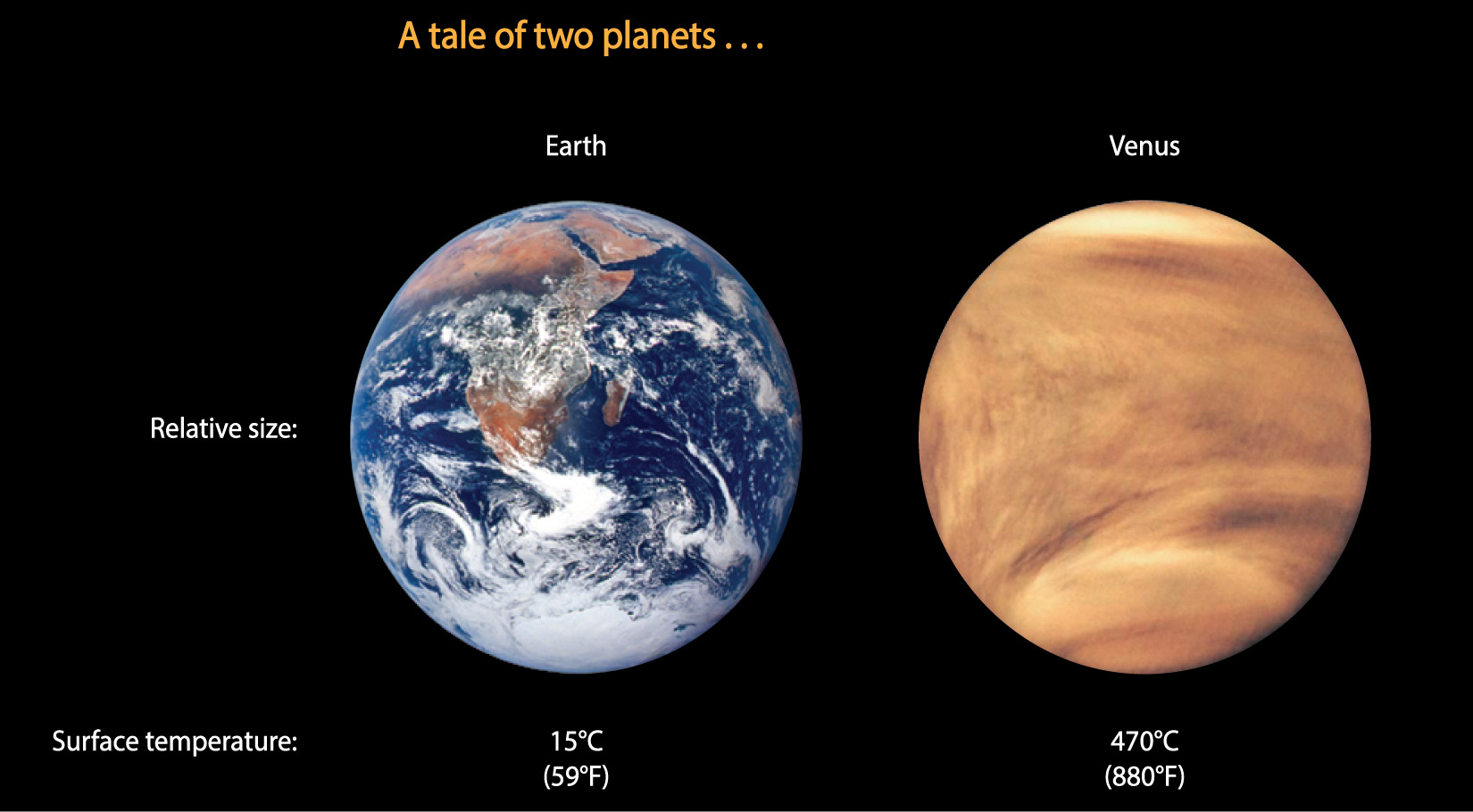
Figure 7.1–1 shows the planets Earth and Venus to scale, along with their global average surface temperatures . You can see that both planets are nearly the same size (Earth is only about 5% larger in diameter), and from Section 4.3.1 you know that they are both rocky planets.
Based on everything you’ve learned so far, the similarities of Earth and Venus in size and composition should make you expect them to be similar in all of their major characteristics. And they are, except for one: as the figure shows, Earth has a comfortable average temperature that makes our planet home to abundant life (and us), while Venus is hotter than a pizza oven.
If you are thinking like a scientist, this “tale of two planets” should pose a major mystery. After all, in science, when we expect one thing (the two planets to be similar in all ways) and observe another (Venus is far hotter), we should investigate further until we understand what is going on. That’s what we will do in this section, and in the process, we’ll find that understanding Venus also helps us understand the basic science of global warming on Earth. This, in turn, will lead us to understand the cause of this warming (it’s us!), how we know that it is underway, and how the current warming compares to other periods of warming and cooling that have occurred in Earth’s past.
Section Learning Goals
By the end of this section, you should be able to answer the following questions:
- What is the greenhouse effect?
- How is human activity strengthening Earth’s greenhouse effect?
- How do we know that global warming is really happening and is human-caused?
- How does human-caused climate change compare to natural climate change?
Before you continue, take a few minutes to discuss the above Learning Goal questions in small groups or as a class. For example, you might discuss what (if anything) you already know about the answers to these questions; what you think you’ll need to learn in order to be able to answer the questions; and whether there are any aspects of the questions, or other related questions, that you are particularly interested in.
Group Discussion
The Science of Global Warming
Working in small groups or as a class, do your best to answer the following questions. Don’t worry if you don’t know all the answers; you’ll learn the correct answers later in this chapter.
- In your own words, summarize the mystery posed by the “tale of two planets” in Figure 7.1–1. Then discuss the mystery and form a hypothesis to explain why Venus is so much hotter than Earth. How confident is your group in your hypothesis?
- What do we mean by “global warming” on Earth, and how do we know that it is happening?
- What do you think is causing global warming on Earth?
- Have you ever heard of the greenhouse effect? If so, what do you think it is?
- What are fossil fuels and what, if anything, do they have to do with global warming?
- What effects do you think global warming is having on Earth and on human civilization?
This discussion is designed to provide you with insight into what students already know about global warming and to help uncover any misconceptions they might have. Notes:
- (1) The mystery is why two planets that are in most respects very similar would differ so much in their surface temperatures. In terms of hypothesis, many students are likely to suggest it is due to the planets’ differing distances from the Sun, which we discuss in Section 7.1.1.
- (2) through (6): These are essentially diagnostic questions that you can use to identify how much your students already know about the topic we’ll be covering in this chapter.